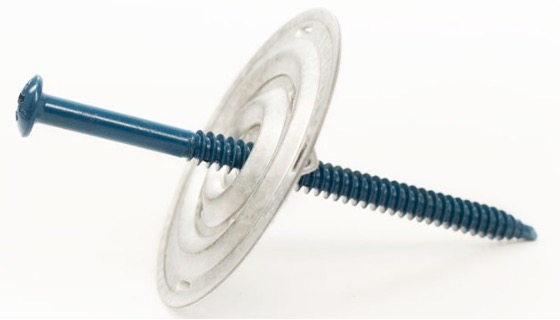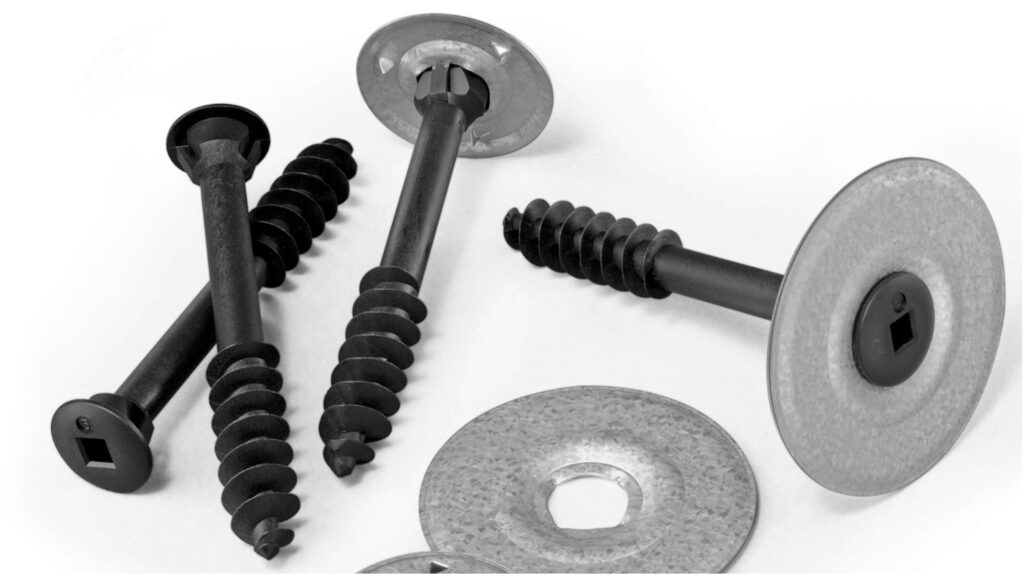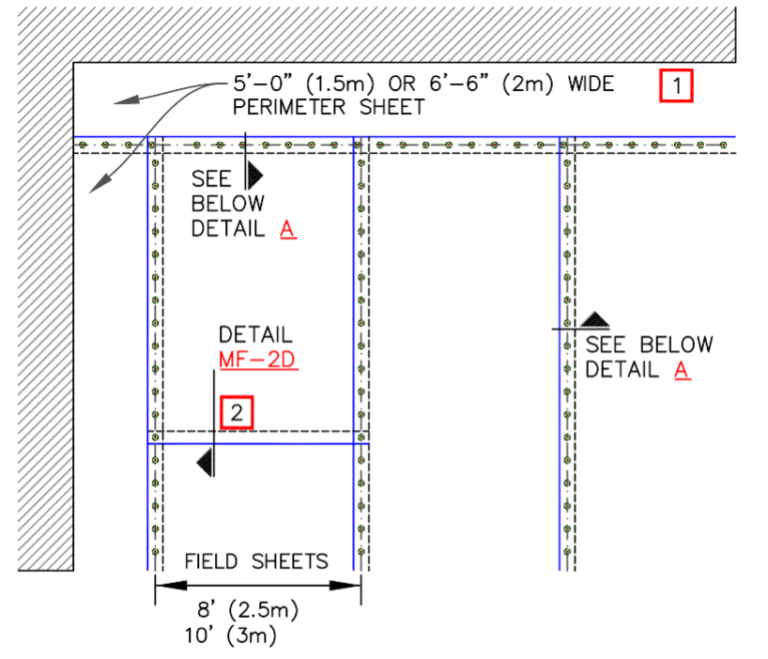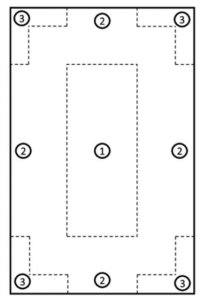Table of Contents
Mechanically Attached Vs Fully Adhered Roof Systems
This is Part 3 of a four part series on the details and factors that contribute to a quality commercial roof that will last. Read Part 1 Here. Read Part 2 Here. Read Part 4 Here.
Overview:
- 3.1 Mechanically Attached VS Fully Adhered Roof Systems
- 3.2 Mechanically Attached Systems
- 3.3 Adhered Roof Systems
Roof systems can be either mechanically attached (M/A), secured by screws and metal reinforcing plates, or fully adhered (F/A), glued with adhesives. Let us look at the specific types more closely.
3.1 Mechanically Attached VS Fully Adhered Roof Systems
Mechanically Attached Systems are the most common because they are considerably less expensive than fully adhered systems and often available with the same 20-year warranties.

Fully Adhered Systems are more expensive but more durable.
- Fully adhered roofs will outlast systems that are only screwed down to the roof deck, which wear over time from the constant fluttering caused by wind.
- Fully adhered roofs have other advantages such as reduced moisture intrusion and increased wind speed ratings.
Hybrid Roof Systems provide a good compromise; being more cost effective than fully adhered systems , while gaining many of the benefits of fully adhered systems.
- The layers of insulation will be mechanically attached to the roof deck.
- If coverboard is used it may be attached with fasteners or preferably with adhesives which would provide a better thermal break.
- The new membrane would be fully adhered to the substrate (insulation or coverboard).

3.2 Mechanically Attached Systems
Once the roof system type and uplift pressures have been calculated (see part 2), the next step is determining the proper fasteners, adhesives, fastening patterns, and adhesive coverage rates.
Fasteners: Specialized fasteners are required to achieve the high pull out strength by the manufacturers.
These Fasteners are beefy: This is a photo of a screw used to secure membrane to a roof deck.
A common drywall screw has been placed next to the 1/4″ diameter roof screw for scale. Manufacturers require pull tests to assure that the roof system is properly secured.
For fasteners like these (which are typically placed every foot), it’s common for pull-out tests requirements to achieve a minimum of 400 pounds of resistance.
Depending on the roof deck it is not uncommon for us to achieve 1,000 pounds of pull-out resistance.

Roofing manufacturers have specialized fasteners for every type of roof deck (wood, steel, concrete,…), and require that they be utilized.
Fasteners are always paired with heavy duty plates (2″ to 3″ in diameter) to secure insulation or membrane in place.

Membrane Screw with a 2” diameter barbed plate.

- For gypsum or tectum decks Large 5/8” diameter auger screws secure insulation or membrane.
- Top Center: barbed plate used for securing membranes.
- Bottom Right: smooth 3” diameter plate used to secure insulation or coverboards.
Insulation / Coverboard Securement
Manufactures have performed extensive testing and provide specifications and charts dictating which fasteners must be used into which deck type and how many fasteners must be used to achieve the desired uplift pressures, desired warranty and to meet local codes.
- 6 to 32 fasteners will be required to secure each 4’ x 8’ board.
- Below are common fastening patterns detailing 8, 10, 12 and 16 fasteners per board.

Mechanically Attached Membrane:
In the same manner that manufactures will specify how the insulation boards will be secured, they will also stipulate how the membrane must be mechanically attached.
Field Sheets are full width rolls of membrane used in the center of the roof, typically 10′ wide.

Perimeter Sheets: Previous sections explained how and why the perimeter of roofs experience greater uplift forces and need enhanced securement (see Part 1).
- Perimeter sheets are roughly half the width of the field sheets, typically 5′ to 6′ wide.
- Perimeter sheets are usually required in the corner and around the perimeters of the roof, zones 2 and 3 in this zone map. It is common for one to four rows of perimeter sheets to be required.
- Manufacturers will also Specify the maximum fastener spacing allowed: 6″, 9″ or 12″.

3.3 Adhered Systems
As with mechanically attached systems, manufactures have performed extensive testing and provide specifications and charts dictating:
- What kinds of roof decks are acceptable substrates to adhere to.
- Which types of insulation/coverboard may be adhered.
- What the glue bead patterns and spacings must be.

The glue bead spacing requirements will vary for each project, but it is common to see the following requirements for glue bead spacing to attach roof membrane.
12″ O.C. (on center) at the center of a roof (Zone 1)
6″ O.C. around the perimeter of a roof (Zone 2)
4″ O.C. in the roof corners (Zone 3)

Coverboards and Insulation Adhesives:
For adhered systems, coverboard and insulation boards must be secured with two-part polyurethane foam adhesives:
The bonding adhesives will be laid down in beads that are spaced 4″ to 12″ apart per manufacturer specifications to meet the project’s required uplift pressures (See Part 2).
For smaller projects the adhesives are available in pressured cylinders (about the size of a typical BBQ propane tank.

For larger projects the bonding adhesives are available in more economical 15 or 55 gallon drums and require the use of a special glue rig with a generator and specialized pumps that achieve the perfect mix ratio for application.

Membrane Adhesives:
There are a variety of adhesives used to adhere the variety of membranes that commercial roofers use.
- In order to ensure compatibility and a long service life for the roof, it is critical that the adhesives be provided by the membrane manufacturer and compatible with the specific membrane being installed.
- The most common adhesives used are similar to contact cements. The adhesive is applied by:
- Applying the adhesive to both the membrane and insulation/coverboard.
- The adhesives are allowed to setup.
- The membrane is carefully laid down in place and pressed with a 100-pound roller.

Hybrid system with a mechanically attached insulation and an adhered membrane
Conclusion
In conclusion, commercial roofers use a variety of adhesive methods, both mechanical and/or chemical, to insure a solid and water tight roof membrane system that will last. Commercial buildings require specific fasteners, bonding agents, and patterns of attachment depending on the membrane being used and the wind uplift pressure that the roof system must endure. Having a smart and professional commercial roofing contractor will insure that your roof follows the proper standards for installing a high performance roofing solution that will last.


